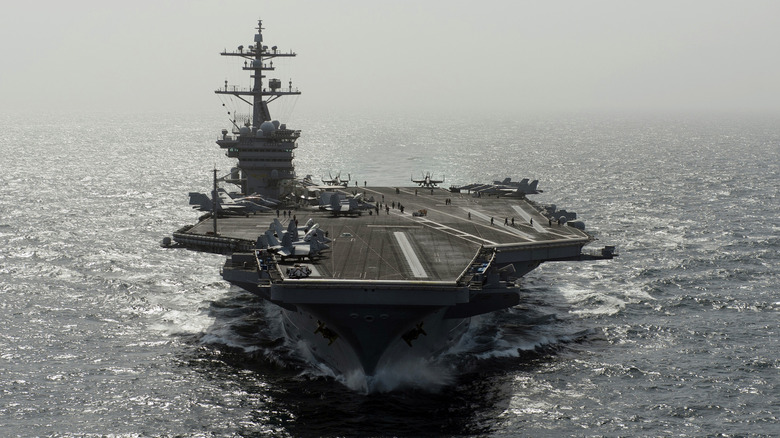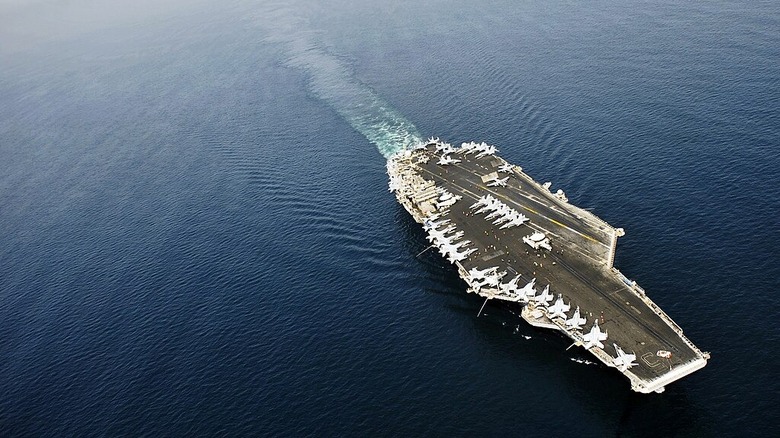How Long Does It Take An Aircraft Carrier To Cross The Pacific?
The Pacific Ocean encompasses over 62 million square miles, which equates to roughly one-third of the Earth's total surface area. It's both the largest and the deepest of the three major oceans, dwarfing the Atlantic Ocean (which aircraft carriers traverse routinely) in every respect . It has an average depth of 14,040 feet and is home to the world's deepest known point (the Challenger Deep in the Mariana Trench), sitting at 36,070 feet below the surface. U.S. Navy often finds itself in the Pacific Ocean, and its most advanced aircraft carrier or one of its forthcoming sister ships will likely have to trek across its wide expanse.
The actual flank (top) speeds for most Navy vessels are classified to keep would-be enemies from knowing their true operational capabilities, but we do have a good idea of how fast they can travel. Both Nimitz-class and the newer Ford-class carrier (with powerful Bechtel A1B PWR nuclear reactors that deliver three times the power of a Nimitz-class carrier's A4W reactor) generally cruise at around 20 knots, but can easily reach sustained speeds of over 30 knots (35 mph).
A straight-line journey across the Pacific Ocean — say from the Naval Air Station (NAS) North Island in San Diego to U.S. Fleet Activities in Yokosuka, Japan — is roughly 5,150 nautical miles. Assuming it was running continuously at 30 knots per hour, it would take approximately 183 hours, or nearly eight days to reach the other side of the Pacific.
Traversing the high seas is no easy task
Terms like nautical miles and knots might be confusing initially, but they're simple concepts. Nautical miles are used to measure the distance traveled over water and are based on longitude and latitude coordinates, with one nautical mile equating to one minute of latitude. A nautical mile is a little longer than a standard mile at 1.1508 land miles.
So, if a carrier maintained a leisurely "cruising speed" of only 20 knots, it would take over 257 hours, or almost 11 days to traverse the Pacific. Keep in mind that this is an estimate based on the publicly-disclosed speed aircraft carriers are capable of, not the fastest possible speed one could travel across the Pacific should one be forced to do so. This estimate only takes into account U.S. Navy carriers, which are believed to be the fastest in the world. It also excludes mischievousness behavior of Mother Nature and all her assortment of bad weather (i.e., hurricanes, cyclones, squalls, rogue waves, waterspouts, etc.) that might force a carrier to change course and go around these hazards.
Something else to note, running at flank speed for extended periods could cause an array of issues, such as an increased strain on systems, risk of accidents, high vibration and noise, not to mention the loss of formation control since the carrier's flank speed would easily outpace that of the rest of the strike group that was accompanying it. While straight-line voyages can be done between San Diego and Japan, the presence of Joint Base Pearl Harbor Hickam in Hawaii gives ships the perfect stopover point along the journey.

